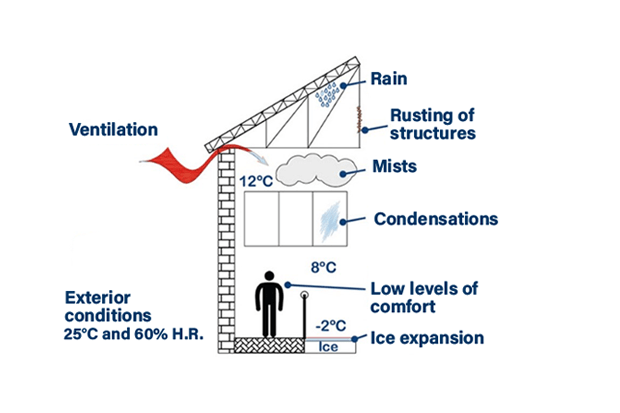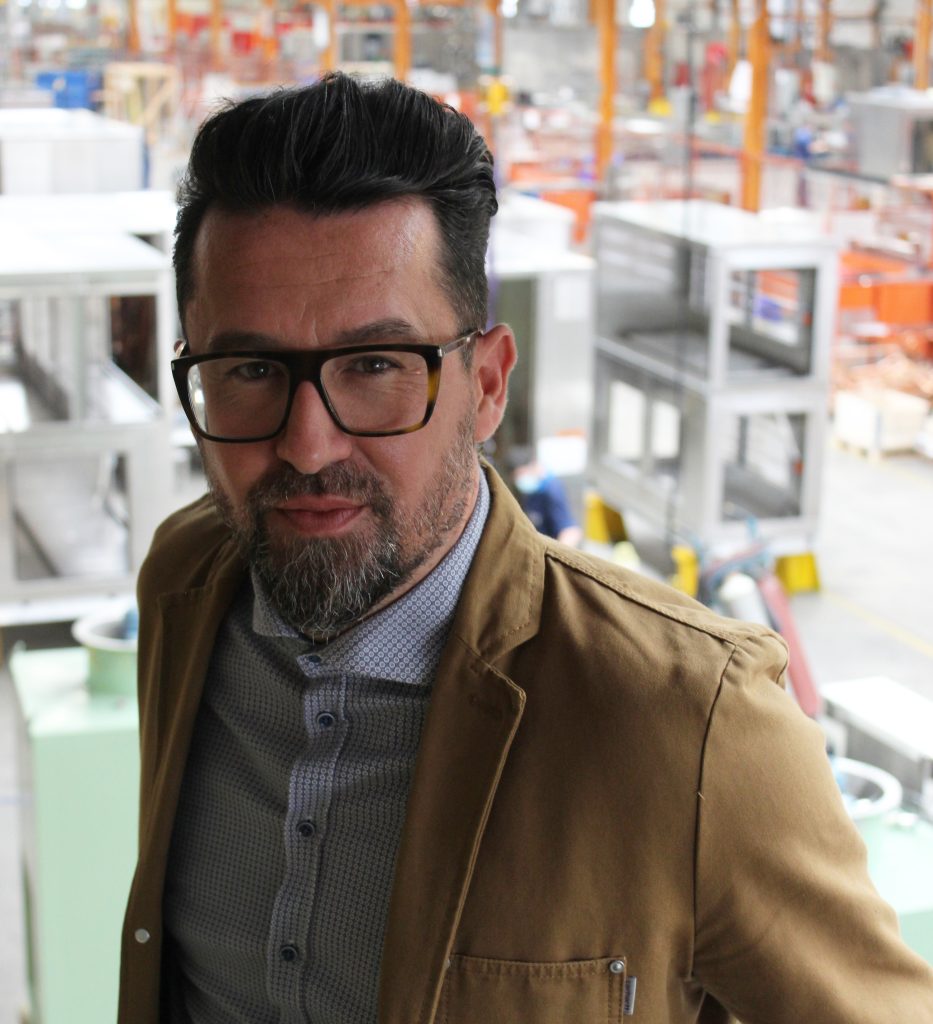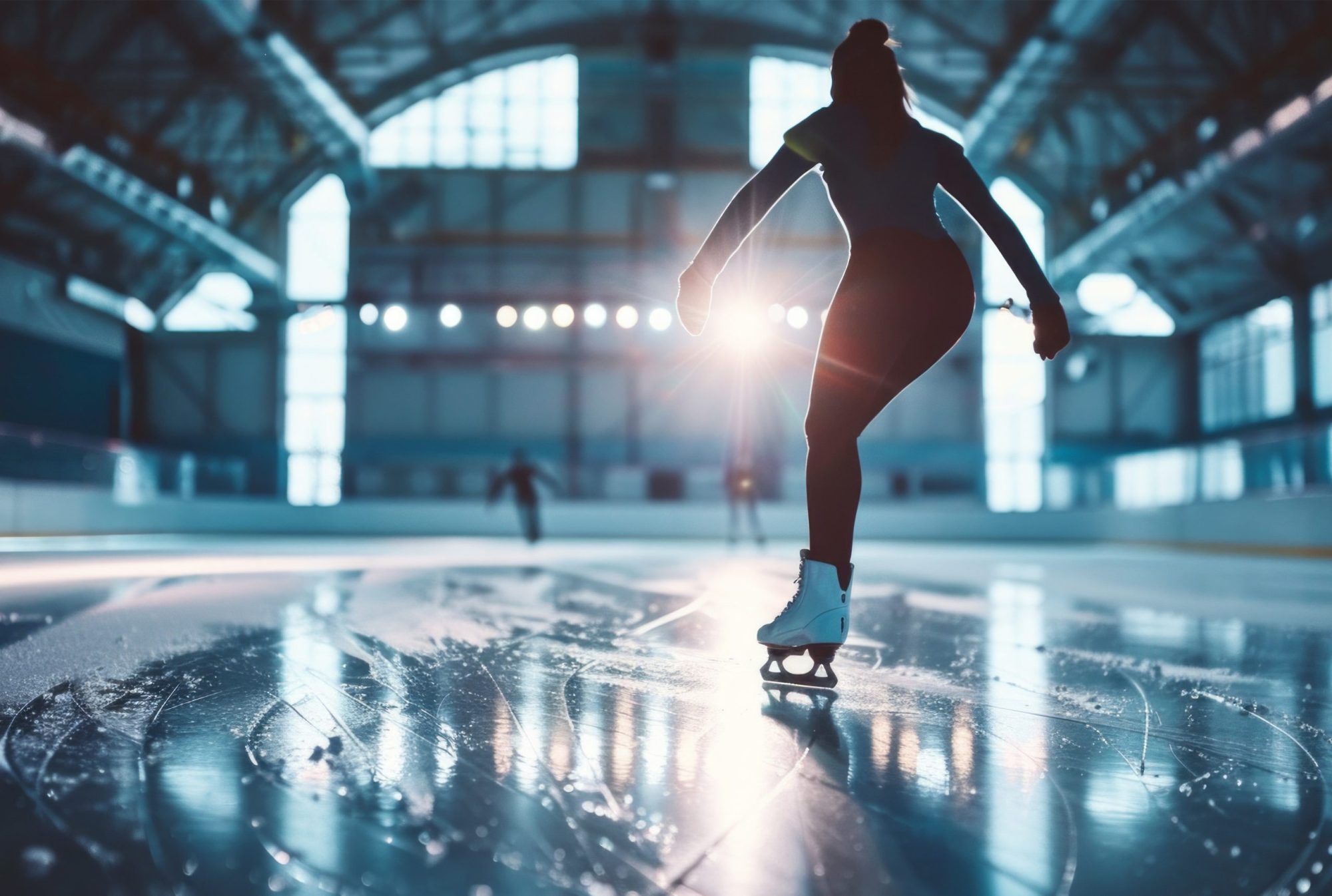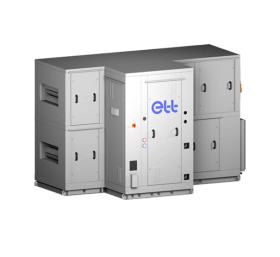ETT, attentive to the specific constraints of ice rinks
The ice rink is a tertiary building (Establishment opent to the public) subject to numerous technical constraints and issues that need to be taken into consideration.

The risk of condensation
There is an increased risk of condensation on the walls due to the very low ambient temperature (12 to 14°C) in all seasons.
ETT units are designed to blow at a very low weight, capable of maintaining an environment that will prevent any formation of water droplets (deformation of the ice surface) or fog for the skaters.
Comfort for skaters and spectators
There are two zones to be distinguished in an ice rink.
The rink where the skaters play will be treated by a machine dedicated to blowing and extracting air from the roof structure.
The ventilation system in the stands will be equipped with an air handling unit. This will regulate the supply of fresh air according to the CO2 level measured by a dedicated probe. This approach will guarantee optimum comfort for all spectators, by maintaining ideal indoor air quality, while adapting to variations in attendance within the rink.
Energy performance
Air handling systems are subject to intensive operation, with very low temperature regimes.
Our ETT units are equipped with optimum thermodynamic recovery to promote heat recovery.
ETT's solutions for meeting the aeraulic and economic challenges of ice rinks include various functions:
This is the system best suited to optimising the energy efficiency of air handling systems according to room occupancy and therefore the amount of fresh air required by regulation.
The purpose of this function is to use outside air to cool a room when conditions are favourable.
Adapted to corrosive environments, ETT machine components can benefit from specific coatings for saline and sulphurous environments, such as varnished piping and brazing, titanium and insulated water exchangers, heresite-coated coils, etc.
Heat exchangers are frequently used to preheat fresh air. ETT offers a wide range of technologies, including plate, rotary, heat pipe and glycol water heat exchangers.
The operator must ensure that his equipment does not generate any particular noise which, by its duration, repetition or intensity, is detrimental to the peace and quiet of the neighbourhood.
ETT has a wide range of technical solutions to combat noise pollution from air handling systems.
Dimensional constraints are very often the source of integration difficulties when replacing existing equipment.
ETT's strength lies in its ability to offer completely customised machines that fit in with their environment.
ETT has developed a remote supervision tool integrated into their machines. The aim is to provide operators with monitoring capabilities for their machines, and to enable ETT to provide fast and reliable expertise. Other services are also integrated.
Your project
New build
Refurbishment
In pictures...

Have a question ?
A project ?
Expertise dedicated to the ice rink market
ETT is renowned for its expertise in air treatment for humid environments, and also in the ice rink market. ETT designs and manufactures systems that regulate temperature, humidity and air quality to prevent condensation, control conditions, and ensure a high-quality ice surface while minimising energy costs.
ETT offers sustainable and efficient solutions tailored to the specific needs of ice rinks.
Regulations
The regulatory framework governing ice rinks focuses mainly on sanitary aspects, with particular emphasis on water treatment. In terms of managing the indoor atmosphere, the sizing of ventilation systems is mainly based on their ability to control humidity. This approach is crucial to preserving the quality of the ice surface and ensuring a comfortable environment.
Nevertheless, it is imperative not to neglect the air renewal standards laid down by employment regulations. In accordance with articles R.4222-6 and R.4222-11 of the French Labour Code, a minimum supply of 60 m³/h of fresh air per occupant must be ensured. The aim of this requirement is to guarantee satisfactory indoor air quality, which is essential for the health and well-being of the ice rink's users and staff.




